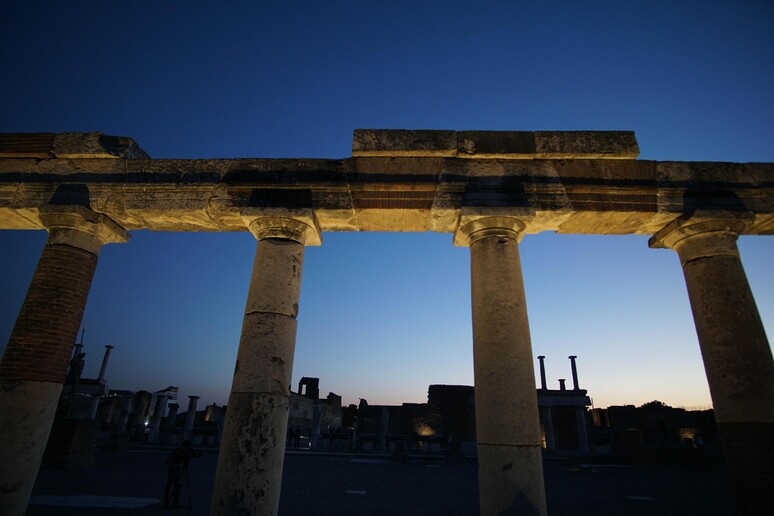The Naples Archaeological Museum,
MANN, presented findings on Wednesday from examinations of 150
artifacts of various fibers and fiber arts from the Roman
imperial period, found mostly at the Pompeii archaeological site
and the area buried by the eruption of Vesuvius in 79 A.D.
It presented the findings at the biennial Art and Restoration
Fair in Florence.
Some of the objects presented included a wooden spool with
silk thread, threads made of gold, a handbag, a bow, and samples
of textiles such as linen, wool, and hemp, all of which revealed
the feminine side of the ancient world.
MANN Director Paolo Giulierini said the museum has entrusted
restoration of the collection to the Italian Cultural Ministry's
autonomous institute for restoration, the OPD, in Florence.
He said MANN has also started a partnership with the
University of Campania's Vanvitelli campus's architecture and
industrial design department to study a concept for the 2019
exhibition.
"(The exhibition) will put this valuable collection on
display for the first time, as well as the fascinating history
of the ancient textiles culture," Giulierini said.
"The exhibition is supported by a scientific research project
that, thanks to technology, will examine the composition of the
fibres and how they were worked, including with the goal of
determining the most appropriate conservation methods," he said.
Other objects shown at the presentation included a cloth
woven with asbestos that came from the 4th-century necropolis in
Vasto, as well as asbestos threads and a fabric knitted with
silk that radiocarbon dating placed between the 15th and 16th
centuries.
Technology used to examine the fibres includes X-ray
spectroscopy on electron microscopes and atomic force microscopy
in order to analyse the nature and morphology of the samples.
The technology revealed, among other things, that the thick
fibres of the bow were made from pine needles, and that the silk
from the wooden spool was wild silk produced by silkworm moths.
"With the students we are creating an informational database
on personal and decorative textiles based on examinations of our
frescoes," said Luigia Melillo, head archaeologist at MANN's
restoration office.
ALL RIGHTS RESERVED © Copyright ANSA











